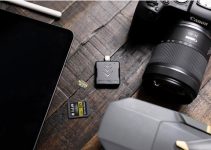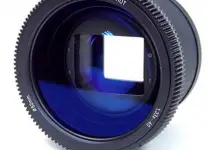Like any other technical aspect of the filmmaking process, audio needs special treatment, a lot of practice and professional attitude to get professional results. Today we’ll try to give you some basic ideas on how to set optimal level for you dialogue audio and how to process it later in post-production.
One of the most important things you should consider even before you start recording is the tool(s) you are going to use. Whether you pick a shotgun mic, a lav mic or the built-in microphones of your field recorder, make sure you pick the right tool for the particular job you have.
Last week we had a post with some basic tips and tricks on how to achieve great results and record high quality sound on set.
Now, let’s have a look at the video from Curtis Judd who will show us his personal workflow for setting the levels for recording dialogue.
The suggested workflow is simple and straightforward and will do the job in most situations. However, we have some additional suggestions for recording high quality dialogue.
- Indeed, it is always better to conduct a quality sound check before you start recording. While it’s usually best to start from right in front of the mic, some people’s voices may sound better a little closer or further away, or even to the side. Foremost, make sure you test and monitor your talent’s voice in advance, and be careful with the peaking points on the sound level meter while you are recording your subject’s voice.
- Keep the peaking away from 0 db on your level meter. In the digital world all the information in audio signal beyond this measurement will be lost and you won’t be able to recover it later in post production.
- Further, there is a simple explanation why you should keep your level in the -12 -10db peaking range. If you set your average level around -6db for instance, probably you wouldn’t have enough room while recording. It is likely the peaks will hit 0db, the audio will clip and you’ll loose information.
- On the other hand, if you set your input level too low some noise may occur. Sure, you can reduce it later, however, it is always better to capture and record voice as clear as possible without distortion caused by clipping and noise.
After you record the dialogue audio it is a good practice to check the waveform for peaks and correct them manually using the standard level control of your NLE.
If you like to make your talent’s voice more clear, punchy and popping up you should use some NLE built-in or third-party plug-ins.
However, I’d suggest not to process the voice permanently. Use the live processing power of your NLE, instead. Most professional audio editors like Cubase, Pro Tools, Logic, Adobe Audition etc. feature live processing in multi-channel mode where you are able to add plug-ins and effects to the voice-over in real-time.
Thus, you won’t degrade the quality of the recording and you will always be able to came back later to make some additional corrections and processing if needed.

I highly recommend Waves Plug-ins Bundles for the job. I often use C4 Multiband Compressor, R Vox, X-Hum and X-Noise for voice processing and L2 or L3 Compressor as Mastering Plug-ins. Try not to overdo the processing. Your aim is to achieve a balanced, natural-sounding voice recording as your final result.
I am curious as to what is your current audio pre-production and post-production workflow? Which tools and software do you use and prefer at the most? Let us know in the comment section below.
Disclaimer: As an Amazon Associate partner and participant in B&H and Adorama Affiliate programmes, we earn a small comission from each purchase made through the affiliate links listed above at no additional cost to you.
Claim your copy of DAVINCI RESOLVE - SIMPLIFIED COURSE with 50% off! Get Instant Access!





